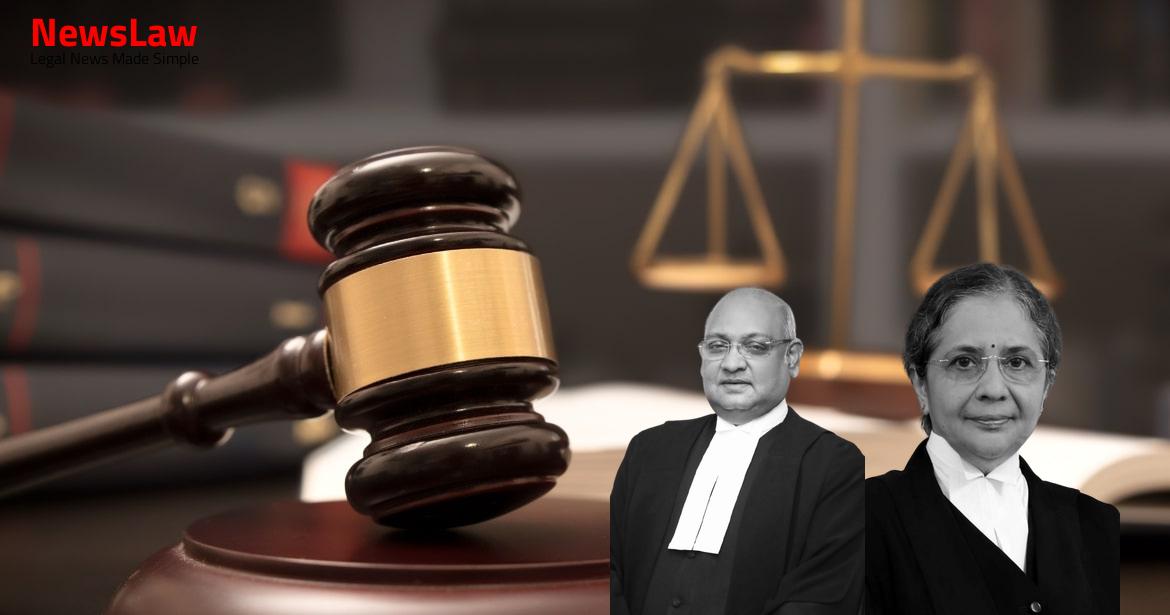In a recent legal case, the court’s analysis of a dying declaration played a pivotal role in convicting the accused. The judgment highlighted the importance of a reliable and coherent statement from a deceased victim as a basis for conviction. This blog post will delve into the legal nuances of utilizing dying declarations in criminal proceedings and the factors considered by the court in reaching its verdict.
Facts
- The appeals challenge the High Court’s judgment dated 17 December 2019, which upheld the conviction and sentence of the appellants.
- The trial court found the prosecution had proven the case against the accused beyond reasonable doubt.
- The accused/appellants were convicted for offenses under Sections 302 and 34 of the IPC and sentenced to life imprisonment.
- Raj Kumar Bhaskar (PW-5) was summoned to record the statement of Shahin Parveen (deceased) in the hospital.
- The case was committed to the Sessions Court for trial.
- Charge-sheet filed altering the case to an offence under Section 302 of IPC.
- Post-Mortem Report revealed shock as cause of death due to burn injuries.
- Deceased pressured into immoral trafficking, leading to assault and eventual death.
- Dying declaration recorded by PW-5 between 08:48 pm and 09:15 pm.
- Accused No.1 claimed absence at the time, while No.2 and No.3 denied involvement.
- FIR registered based on PW-3’s written report with deceased’s thumb impression.
- Charges framed for offences under Sections 302 and 34 of IPC.
- Deceased succumbed to injuries at Safdarjang Hospital, New Delhi.
- Accused/appellants surrounded the victim preventing her escape.
- Accused poured kerosene and set the deceased on fire leading to her admission to the hospital.
- Accused preferred appeals in the High Court against the verdict.
- Police received written report based on deceased’s complaint while she was admitted in the hospital with burns.
- 8 witnesses examined by the prosecution to prove guilt of accused persons.
- Deceased had been residing with accused/appellants after the death of her husband.
- Accused pleaded not guilty and claimed trial, as per the deceased’s complaint accusing them of setting her ablaze.
Also Read: Analysis of Burden of Proof in Recovery Case
Arguments
- The dying declaration (Ext. Ka-6) is not free from doubt.
- It is impossible for the dying declaration to have been recorded between 08:48 pm and 09:15 pm.
- The conviction is based solely on the dying declaration of the deceased (Ex. Ka-6).
- The dying declaration also contains certification by Dr. A.K. Singh regarding the victim’s medical fitness.
- No interference is warranted with the concurrent findings of the trial court and High Court.
- The dying declaration cannot be considered trustworthy, reliable, and cogent for conviction.
- The Discharge Slip (Ext. Ka-7) indicates the deceased was discharged from District Hospital, Moradabad on December 1, 2016, at 05:00 pm.
- Raj Kumar Bhaskar (PW-5) testified about the dying declaration (Ext. Ka-6).
Also Read: Presumption of Genuine Endorsements in Cheque Case
Analysis
- Concurrent findings affirm the truth and coherence of the dying declaration, attributing motive to accused No 1 Pappi @ Mashkoor.
- Dying declaration deemed trustworthy and reliable for conviction.
- Certification by Dr. A.K. Singh verifies victim’s consciousness and fitness to provide statement.
- A clear directive from the Court allows for conviction based solely on a reliable dying declaration without the need for corroboration.
- All aspects of the recording process described by witnesses and medical professionals ensure the authenticity of the dying declaration.
- Eyewitness affirmation of deceased not in fit and conscious state overrides medical opinion on dying declaration
- Court can use dying declaration as basis for conviction if it is true, free from inducement, coherent, and consistent
- Dying declaration can be sole basis for conviction if it inspires full confidence of the court, as per Atbir v. Government of NCT of Delhi case
- Factors for considering conviction based on dying declaration laid out in the judgment
- No specific role of accused No 2 Naeema and accused No 3 Naeem in assisting accused No 1 Pappi @ Mashkoor could be found in the dying declaration (Ext. Ka-6)
- Accused No 1 Pappi @ Mashkoor can be convicted based on the dying declaration, but accused No 2 Naeema and accused No 3 Naeem are entitled to the benefit of doubt
Also Read: Medical Negligence and Compensation: A Landmark Decision
Decision
- Criminal Appeal No 1978 of 2022 and 1979 of 2022 for appellants Naeem and Naeema allowed
- Order of conviction and sentence dated 24 October 2017 quashed and set aside
- Appellants Naeem and Naeema acquitted of all charges, directed to be released
- Criminal Appeal No 1979 of 2022 for appellant Pappi @ Mashkoor dismissed
Case Title: NAEEM Vs. THE STATE OF UTTAR PRADESH (2024 INSC 169)
Case Number: Crl.A. No.-001978-001978 / 2022



